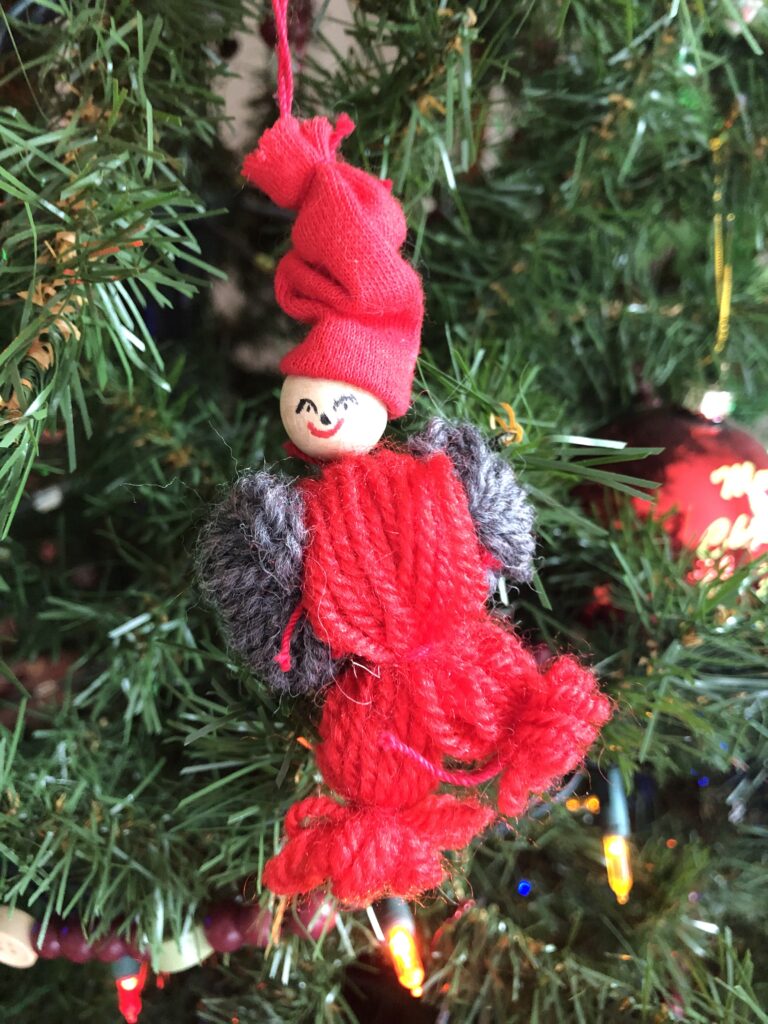
The homemade Tomten ornament on my Christmas Tree has roots in ancient Scandinavia
clay county histories
Markus Krueger | Program Director HCSCC
I can’t imagine Christmas without watching the movie “A Christmas Story.” It’s a tradition that has seemingly always been there. And yet I know that I was born before the movie was made.
The 1983 film in which young Ralphie schemes to get his Red Rider air rifle takes place in a timeless era of American Christmas. Judging by the popularity of the Wizard of Oz, though, it probably took place in 1939, when that movie was released. That same year, Montgomery Ward printed up two million copies of a booklet about a new Christmas character concocted by author Robert L. May: a red-nosed reindeer named Rudolph. It’s strange to think that some people reading this article are older than Rudolph the Red Nosed Reindeer.
But Rudolph’s 1949 song and the 1964 the classic stop-motion animation special make me think of the Christmases of the Baby Boom. The 1950-60s was a golden age of Christmas, with space-aged metallic tinsel, mountains of presents made possible by post-war prosperity, and radical new scientific methods of introducing sugar into our bodies. It was a good time to be a kid. New holiday icons like Frosty the Snowman and the Grinch were created for young Baby Boomers.
We haven’t stopped creating icons. I’ll wager that the Elf on a Shelf, based on a 2004 book, has some of that “holiday magic” staying power. In the 1992 film “Home Alone 2: Lost in New York,” Kevin McCallister watches the classic 1966 cartoon “How the Grinch Stole Christmas” in the back of a limo. Today, we are farther away in time from Home Alone 2 (28 years) than Kevin was from The Grinch Who Stole Christmas (1992 – 1966 = 26 years). Though it makes me feel old to admit it, both films are Christmas classics now.
Creating Holiday icons is nothing new, either. Saint Nikolaus of Myrna was a third century Greek bishop living in what is now Turkey, but he became a “right jolly old elf” in 19th century America thanks in large part to a 1823 poem by Clement Clarke Moore, the popular cartoons of Thomas Nast, and countless others who added their own little bits to this new and fun tradition. Increasingly, it is this American brand of Christmas that is being exported throughout the world, even to places that have no historic relationship to the Christian religion. Christmas is big in Japan!
Jesus has been the reason for the season for a lot of people and for a long time now, but many of our Christmas traditions have roots in winter-solstice celebrations people were throwing long before Christ was born. The Roman gift-giving festival of Saturnalia and the Yule/Jul festivities that brought light and comfort and joy to dark and snowy northern Europe were mixed together. The Church kept what they liked and spent a few hundred years adding more traditions. And though it sounds blasphemous, Hollywood and advertising companies seem to be the guiding force for Christmas traditions for the past hundred years.

